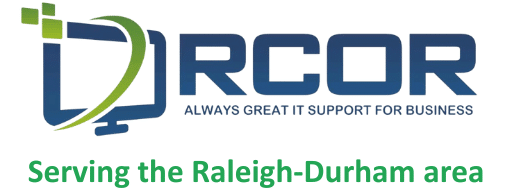Managing passwords across countless business tools is one of the most common headaches for employees and IT teams alike. Every platform requires a login, and every login means another password to remember—or forget. This is where Single Sign-On Identity Management (SSO) comes in. By allowing users to log in once and gain access to multiple applications, SSO reduces password fatigue, strengthens security, and simplifies IT administration.
As organizations adopt more cloud-based tools and remote work expands, centralizing authentication has become a necessity rather than a convenience. But before deciding whether to implement SSO, it’s worth understanding how it works, what benefits it brings, and what challenges to anticipate.
What Is Single Sign-On (SSO)?
At its core, Single Sign-On (SSO) is a system that lets users access multiple connected applications with a single set of credentials. Instead of logging in separately to platforms like Microsoft 365, Salesforce, or Slack, employees authenticate once—typically through a trusted identity provider—and instantly gain access to all authorized systems.
For users, this means fewer passwords to manage and fewer login prompts. For IT teams, it means better visibility into who’s accessing what, reduced password-reset tickets, and improved control over sensitive data. In short, SSO makes authentication simpler for everyone while tightening the security perimeter.
The Benefits of Single Sign-On Identity Management
Implementing SSO offers tangible advantages that impact both security and productivity.
1. Stronger Security Through Centralized Control
With traditional systems, every app has its own login credentials—making it harder to enforce consistent security policies. SSO centralizes identity management, allowing IT teams to apply universal standards for password strength, multi-factor authentication (MFA), and access permissions. This not only prevents weak password practices but also gives administrators instant control when an employee leaves or changes roles.
2. Reduced Password Fatigue
Reusing passwords or writing them down is one of the top security risks in any organization. With SSO, users only need to remember one secure password. This significantly lowers the chance of breaches caused by lost, reused, or easily guessed credentials.
3. Improved Productivity and User Experience
Employees waste surprising amounts of time dealing with forgotten passwords and repeated logins. SSO eliminates those interruptions. Once signed in, users can move smoothly between systems—an advantage that directly improves workflow efficiency and morale.
4. Regulatory Compliance and Audit Readiness
For companies that must meet data protection standards like GDPR or HIPAA, SSO simplifies compliance. Centralized access logs and identity tracking provide the visibility auditors look for, while secure authentication practices reduce liability exposure.
5. Scalability for Growing Businesses
Whether adding five users or five hundred, SSO scales easily. Cloud-based identity providers handle authentication workloads without manual reconfiguration, making SSO ideal for fast-growing or remote-first teams.
Single Sign-On Pros and Cons
Like any technology, SSO isn’t a one-size-fits-all solution. Understanding the pros and cons of single sign on helps organizations plan realistic implementations.
Pros:
Convenience: One password grants access to all authorized applications.
Security: Centralized management and MFA integration reduce breach risk.
Efficiency: Faster logins and fewer password resets improve productivity.
Compliance: Centralized logs and policies simplify audits and data governance.
Cons / Disadvantages of Single Sign-On:
Single point of failure: If the SSO provider experiences downtime, users may temporarily lose access to all linked apps.
Initial setup complexity: Integrating multiple platforms can require careful planning and configuration.
Dependency on provider security: Trusting a third-party identity provider means relying on their uptime and encryption standards.
Despite these challenges, most organizations find the benefits far outweigh the drawbacks—especially when SSO is paired with strong MFA and continuous monitoring.
How Identity Management Strengthens SSO
SSO works best when paired with robust identity management—the framework that governs how digital identities are created, verified, and maintained. Together, they form a secure authentication ecosystem.
Identity Governance and Access Control
Identity management systems ensure that every user has the right access at the right time. By defining user roles and permissions centrally, businesses prevent unauthorized access while simplifying onboarding and offboarding.
Enhanced Security With MFA and Monitoring
Modern identity platforms integrate multi-factor authentication and continuous monitoring to detect suspicious behavior. Even if credentials are compromised, MFA blocks most unauthorized logins, while activity logs provide instant insight into anomalies.
Seamless User Experience
Identity management and SSO together create a frictionless experience for employees. Instead of juggling passwords for every tool, users simply sign in once and continue working—securely and without interruption.
This integration is particularly valuable for small and mid-sized businesses, where IT teams are often stretched thin. Centralized access means less manual oversight and fewer opportunities for human error.
Choosing the Right SSO Solution
Selecting an SSO solution starts with understanding your organization’s infrastructure. A good SSO system should:
Integrate easily with existing applications—both on-premises and cloud-based.
Support federated identity management, allowing secure logins across partner networks.
Include MFA to prevent unauthorized access.
Offer audit logs and reporting for compliance and visibility.
Provide real-time alerts to detect and respond to potential threats.
When comparing vendors, prioritize those who regularly update security protocols and have strong reputations for reliability. A trusted provider not only simplifies deployment but also ensures your authentication environment evolves with new cyberthreats.
Streamlining Access Management for the Future
Implementing single sign on identity management is more than a convenience—it’s a strategic step toward modern, secure IT operations. It empowers employees to focus on work instead of passwords, while giving IT leaders the centralized control they need to protect company data.
As businesses continue to expand their digital ecosystems, SSO will remain a cornerstone of efficient identity management. When done right, it reduces risk, saves time, and strengthens trust between users, teams, and the technology they rely on.
Your passwords shouldn’t slow you down. The right identity management system ensures they never have to again.

